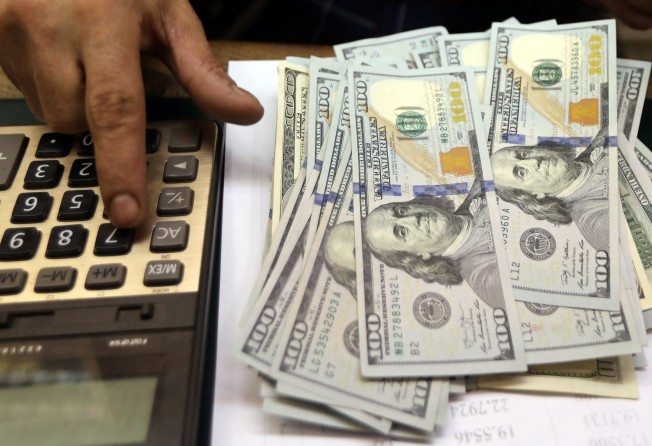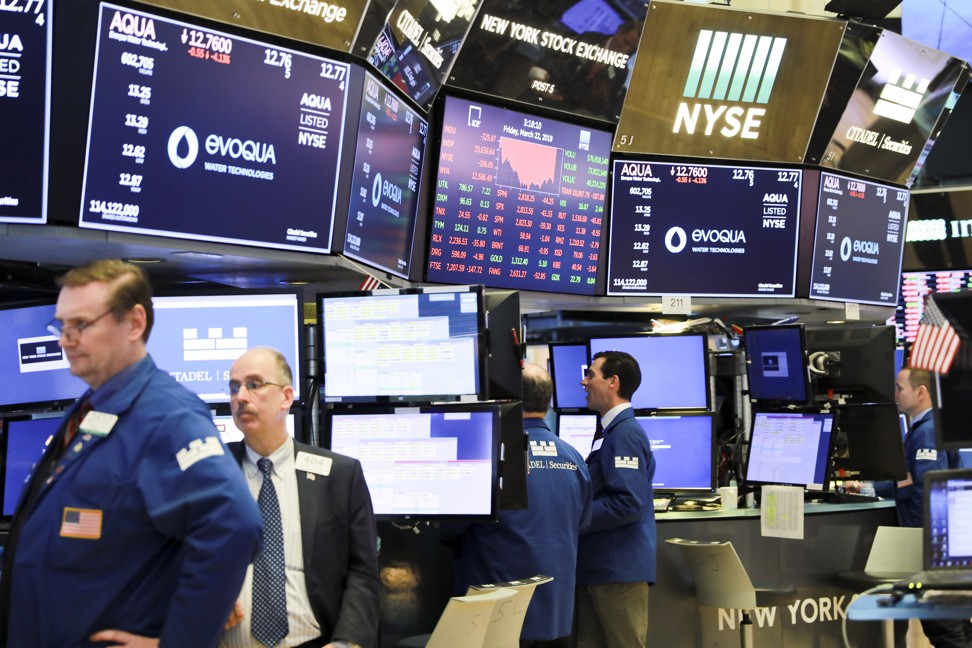Central banks must turn to global financial crisis tool box to tackle the next recession, says Fed’s Rosengren
- Boston Federal Reserve president Eric Rosengren says observers should understand that central banks must use their balance sheets to confront potential recession
- Also calls for US Federal Reserve to hold more short-term US Treasury securities to make it easier to stimulate economy

The United States’ central bank may have to dust off some of the tools that helped steer the economy through the global financial crisis a decade ago should another recession hit, Boston Federal Reserve Bank president Eric Rosengren said on Tuesday.
With interest rates already low leaving limited room for cuts, the US Federal Reserve would likely have to turn to quantitative easing and other balance sheet tools to stimulate its economy, in the case of a downturn.
“I dare say it is important for market observers, lawmakers, and the public to become more comfortable with the benefits of central banks using their balance sheet tools to pursue the public interest,” Rosengren told the Credit Suisse Asian Investment Conference. “In my view, monetary policymakers should give more consideration to structuring the balance sheet to provide more leeway for policy measures to be taken when the next economic downturn occurs.”
The US Federal Reserve is in the midst of a sell-off of the assets it acquired through a long-term quantitative easing programme, but its balance sheet will not shrink to the level of US$870 billion seen in early 2008, he said.
“It is unrealistic to expect the Fed’s balance sheet to return to the size it was before the financial crisis,” he said.
Rosengren also made clear that his comments were technical in nature and were not a prediction of a near-term recession. He said he expected US growth to be around 2 per cent to 2.5 per cent for the coming few quarters, but highlighted risks to this forecast, such as weaker growth from China and Europe, which the central bank must watch closely.
Quantitative easing is a tool when a central bank purchases government debt from the market to lower interest rates and increase the money supply.
One way of increasing the size of the US Federal Reserve balance sheet recommended by Rosengren – a member of the interest rate setting committee – was for the central bank to buy government debt, specifically short-term US Treasury securities. These could then be sold back to the financial markets at a cheaper rate as a means of injecting liquidity into the economy should there be a downturn.

US Federal Reserve policy has shifted significantly in recent months given mounting evidence of a global economic slowdown. In March, it announced that it no longer expected to raise interest rates this year, while in December it raised rates and predicted two more increases in 2019.
To prepare for this mooted slowdown, Rosengren suggested tweaking the maturity of securities in the US Federal Reserve’s portfolio, which would involve buying debts which have to be paid back at differing points.
“In my view, one benefit of having both short and long-maturity treasuries on the Fed balance sheet is that it provides a way to stimulate the economy through quantitative easing without increasing the size of the balance sheet, should that be necessary,” he said. “To do so, the Fed needs to have some Treasury bills on the balance sheet.”
But at the moment, the US Federal Reserve holds virtually no US Treasury bills, which are short-term bonds with a maturity of one year or less.
During the latter part of its quantitative easing operations in 2011, the US Federal Reserve sold short-term securities in its portfolio and used the proceeds to buy longer-term securities to push down long-term interest rates. The lower long-term interest rates stimulated home purchases and business investment, helping the US economy to recover.
Worries over a near-term economic downturn triggered a broad sell-off in stock markets from New York to Sydney on Monday, following release of weak European and US economic data on Friday. Asian markets stabilised on Tuesday morning, but investors still worry that a recent string of disappointing economic indicators point to global recession risks.
In my view, one benefit of having both short and long-maturity treasuries on the Fed balance sheet is that it provides a way to stimulate the economy through quantitative easing without increasing the size of the balance sheet, should that be necessary.
Rosengren also disagreed with the notion that the US Federal Reserve’s efforts to reduce the size of its balance sheet had caused the market turbulence seen at the end of last year.
“In my view, concerns about the international economy, potential trade disputes, and a US government shutdown are much more plausible explanations for the financial market turbulence,” he said.
The US Federal Reserve accumulated about US$3.6 trillion in US Treasury and mortgage-backed securities during its three rounds of “quantitative easing” – buying securities to inject liquidity into the financial market – after the global financial crisis in 2018, bringing the total size of its balance sheet to $4.5 trillion.
It began selling those securities in October 2017, but announced this month that it would slow its sales in May and end them in September, when the balance sheet is expected to stand at about US$3.8 trillion.
Rosengren said there seemed to be little correlation between equity market movements and the relatively small and steady decline in the US Federal Reserve’s balance sheet. Markets recovered earlier this year despite the balance sheet’s continued “quite gradual” wind-down.